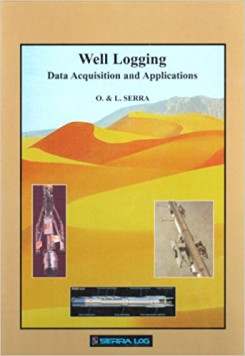Well Logging
This book explains in detail all the physical principles on which are based the logging tools Wireline (WL) and Logging While Drilling (LWD). It describes as well the fundamental tools of the principal service companies, focusing on the factors that influence measurement and on the main applications in geology, geophysics, and petrophysics. As such it constitutes a reference document for all geologists and engineers involved in petroleum exploration and field development.
- Genre: All Books, Petrophysics
Cast & Characters
| 1-56 | Review of fundamental notions |
| 57-90 | General processes used for recording physical parameters |
| 91-94 | Generalities on electrical measurements |
| 95-124 | Resistivity measurements |
| 125-142 | Conductivity measurements |
| 143-162 | Electromagnetic wave propagation and attenuation measurements |
| 163-178 | Magnetic susceptibility and total magnetic field measurements |
| 179-194 | Spontaneous Potential measurement |
| 195-208 | Generalities on nucelar measurements |
| 209-220 | Generalities on natural radioactivity |
| 221-230 | Total Natural Radioactivity measurement |
| 231-252 | Spectrometry of natural radioactivity |
| 253-282 | Density and photoelectric index measurements |
| 283-296 | Generalities on neutron physics |
| 297-320 | Neutron porosity measurements |
| 321-356 | Spectrometry of induced gamma rays |
| 357-376 | Thermal neutron die-away measurements |
| 377-398 | Nuclear magnetic resonance measurements |
| 399-408 | Generalities on acoustic measurements |
| 409-436 | Sonic transit time measurement |
| 437-452 | Sonic amplitude and attenuation measurements |
| 453-464 | Well seismic techniques |
| 465-482 | Generalities on rock texture and structure determination |
| 483-556 | "Dip" and image acquisation, interpretation and applications |
| 557-564 | Temperature measurements |
| 565-568 | Borehole caliper measurements |
| 569-572 | Wireline rock sampling |
| 573-584 | Fluid sampling and pressure measurement |
| 585-586 | Place and role of logging in petroleum exploration |
| 587-590 | Logging programs |
| 591-642 | "Quick-look" methods |

